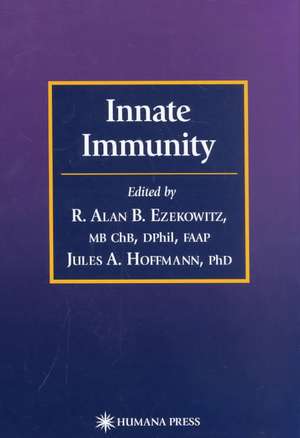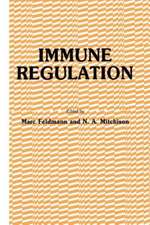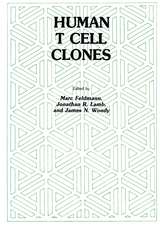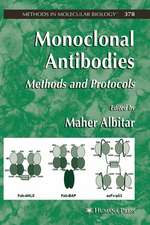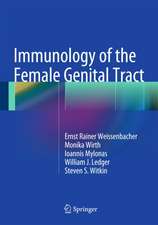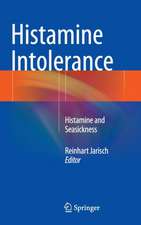Innate Immunity: Infectious Disease
Editat de R. Alan B. Ezekowitz, Jules A. Hoffmannen Limba Engleză Hardback – 6 dec 2002
| Toate formatele și edițiile | Preț | Express |
|---|---|---|
| Paperback (1) | 1106.86 lei 6-8 săpt. | |
| Humana Press Inc. – 8 aug 2012 | 1106.86 lei 6-8 săpt. | |
| Hardback (1) | 1027.15 lei 38-44 zile | |
| Humana Press Inc. – 6 dec 2002 | 1027.15 lei 38-44 zile |
Din seria Infectious Disease
- 5%
 Preț: 1435.28 lei
Preț: 1435.28 lei - 5%
 Preț: 1430.35 lei
Preț: 1430.35 lei - 18%
 Preț: 723.51 lei
Preț: 723.51 lei - 5%
 Preț: 801.13 lei
Preț: 801.13 lei - 5%
 Preț: 683.03 lei
Preț: 683.03 lei - 5%
 Preț: 1110.72 lei
Preț: 1110.72 lei - 5%
 Preț: 1094.25 lei
Preț: 1094.25 lei - 5%
 Preț: 1414.80 lei
Preț: 1414.80 lei - 5%
 Preț: 1101.37 lei
Preț: 1101.37 lei - 5%
 Preț: 790.88 lei
Preț: 790.88 lei - 5%
 Preț: 1364.22 lei
Preț: 1364.22 lei - 18%
 Preț: 1280.72 lei
Preț: 1280.72 lei - 5%
 Preț: 2038.62 lei
Preț: 2038.62 lei - 18%
 Preț: 944.99 lei
Preț: 944.99 lei - 5%
 Preț: 1414.29 lei
Preț: 1414.29 lei - 5%
 Preț: 1113.99 lei
Preț: 1113.99 lei - 5%
 Preț: 1431.81 lei
Preț: 1431.81 lei - 5%
 Preț: 1121.69 lei
Preț: 1121.69 lei - 5%
 Preț: 1117.65 lei
Preț: 1117.65 lei - 5%
 Preț: 1612.30 lei
Preț: 1612.30 lei - 5%
 Preț: 723.05 lei
Preț: 723.05 lei - 18%
 Preț: 1253.42 lei
Preț: 1253.42 lei - 5%
 Preț: 1321.71 lei
Preț: 1321.71 lei - 5%
 Preț: 1427.62 lei
Preț: 1427.62 lei - 5%
 Preț: 725.04 lei
Preț: 725.04 lei - 5%
 Preț: 712.60 lei
Preț: 712.60 lei
Preț: 1027.15 lei
Preț vechi: 1081.22 lei
-5% Nou
Puncte Express: 1541
Preț estimativ în valută:
196.54€ • 205.22$ • 162.30£
196.54€ • 205.22$ • 162.30£
Carte tipărită la comandă
Livrare economică 11-17 aprilie
Preluare comenzi: 021 569.72.76
Specificații
ISBN-13: 9781588290465
ISBN-10: 1588290468
Pagini: 428
Ilustrații: XI, 410 p. 60 illus.
Dimensiuni: 170 x 250 x 28 mm
Greutate: 1.05 kg
Ediția:2003
Editura: Humana Press Inc.
Colecția Humana
Seria Infectious Disease
Locul publicării:Totowa, NJ, United States
ISBN-10: 1588290468
Pagini: 428
Ilustrații: XI, 410 p. 60 illus.
Dimensiuni: 170 x 250 x 28 mm
Greutate: 1.05 kg
Ediția:2003
Editura: Humana Press Inc.
Colecția Humana
Seria Infectious Disease
Locul publicării:Totowa, NJ, United States
Public țintă
ResearchCuprins
SECTION I: Plant Immunity.- 1 Pathogen Recognition and Signal Transduction in Plant Immunity.- 2 Plant Disease Resistance Genes.- 3 Nonhost Resistance in Plants to Microbial Pathogens.- SECTION II: Invertebrate Host Defense Immunity.- 4 Regulatory Co-options in the Evolution of Deuterostome Immune Systems.- 5 Antimicrobial Peptides in Insect Immunity.- 6 Innate Immunity in the Horseshoe Crab.- 7 Pattern Recognition Receptors in Drosophila.- 8 Humoral and Cellular Responses in Drosophila Innate Immunity.- 9 Thioester-Containing Proteins of Protostomes.- SECTION III: Mammalian Host Defenses: Pattern Recognition Receptors.- 10 Toll-Like Receptors.- 11 The Macrophage Mannose Receptor and Innate Immunity.- 12 Diverse Roles of Lung Collectins in Pulmonary Innate Immunity.- 13 Structures of Complement Control Proteins.- 14 Lipopolysaccharide-Binding Protein and CD14.- SECTION IV: Mammalian Host Defenses: Links Between Innate and Adaptive Immunity.- 15 The Role of Chemokines in Linking Innate and Adaptive Immunity.- 16 Antimicrobial Peptides.- 17 The Role of Complement in Innate and Adaptive Immunity.- 18 The Role of Natural Killer Cells in Innate Immunity to Infection.- 19 Innate Immune Signaling During Phagocytosis.- 20 The Role of Mast Cells in Innate Immunity.- 21 CD1-Restricted T-Cells.
Textul de pe ultima copertă
Humans share a common template for innate immunity-the first-line defense that serves to limit infection immediately after exposure to microorganisms-with life forms as diverse as flowering plants and insects. In Innate Immunity, leading basic researchers explore host-pathogen interactions across an evolutionary spectrum to elucidate the origins of the human defense system against infection. Bringing together the latest research in the field, the authors review four significant research areas: plant immunity, invertebrate host defense immunity, pattern recognition receptors in mammalian host defense, and the links between innate and adaptive immunity in mammals. They find that the similarities among insect, plant, and mammalian immunological systems shed light on the complex mechanisms involved in adaptive immunity, thereby increasing our understanding of mammalian host defense. Their description of various systems, pathways, molecules, and proteins engaged in the process of host defense suggests that innate and adaptive immunity can no longer be seen as two different systems, but rather as working in tandem to surround and destroy foreign agents that enter the body. The authors also discuss those templates of innate immunity found in primitive systems that are now driving most novel research on human innate immunity.
Innovative and cutting-edge, Innate Immunity demonstrates new ways to explore this system in plants, invertebrates, and mammals, and, by illuminating the dynamic interplay between infectious agents and host defense, clearly reveals the potential for improved therapies to treat infectious diseases.
Innovative and cutting-edge, Innate Immunity demonstrates new ways to explore this system in plants, invertebrates, and mammals, and, by illuminating the dynamic interplay between infectious agents and host defense, clearly reveals the potential for improved therapies to treat infectious diseases.
Caracteristici
Includes supplementary material: sn.pub/extras
